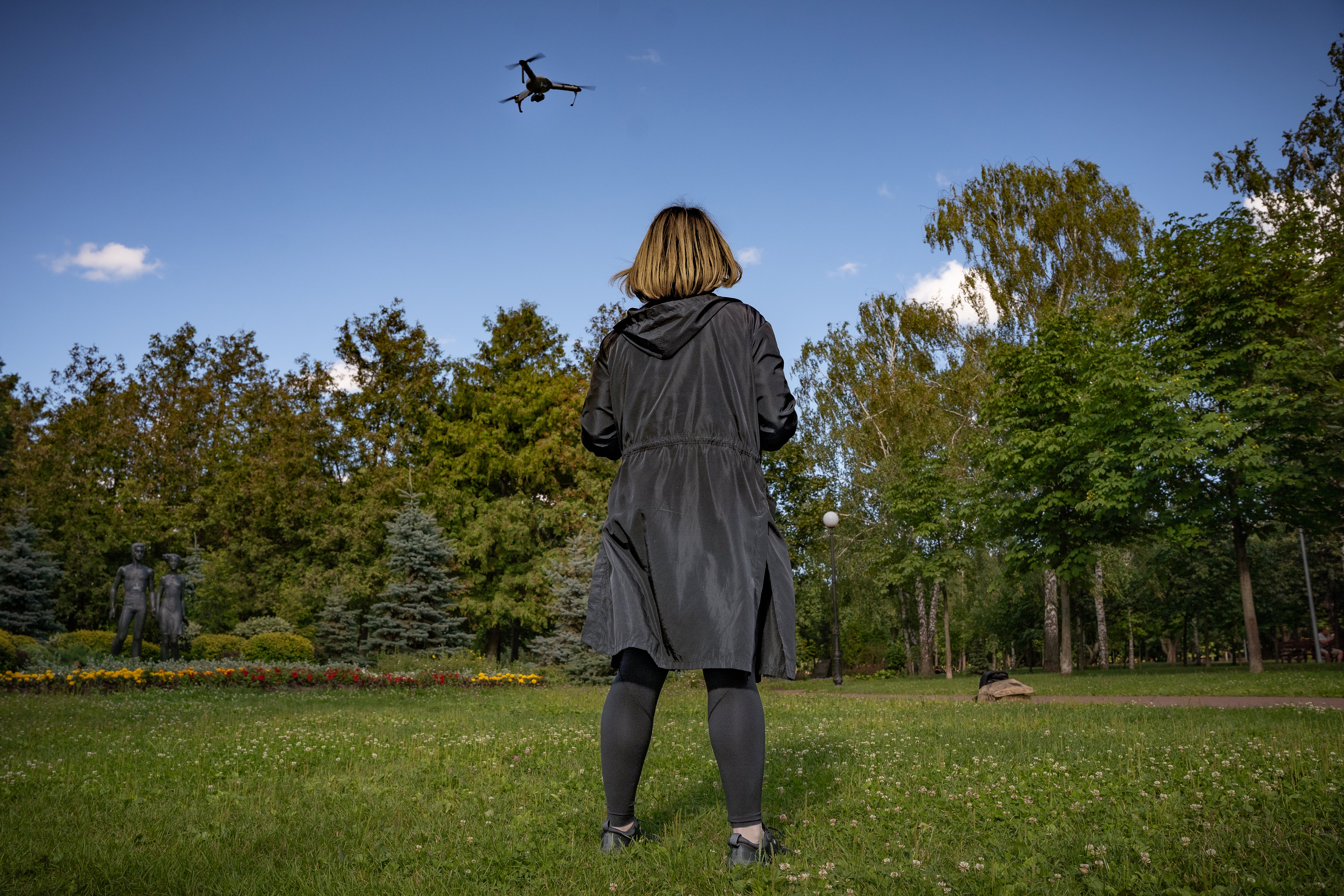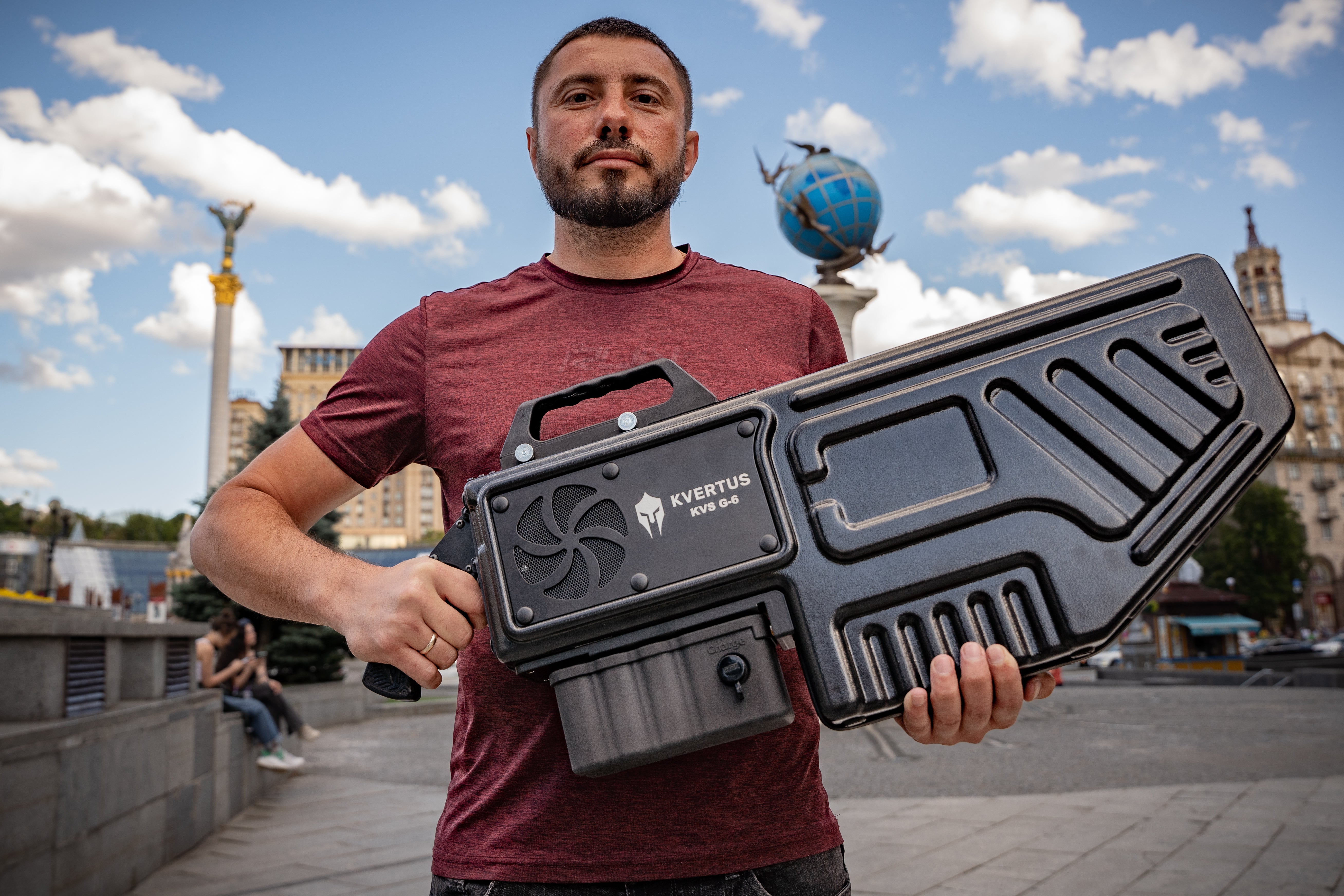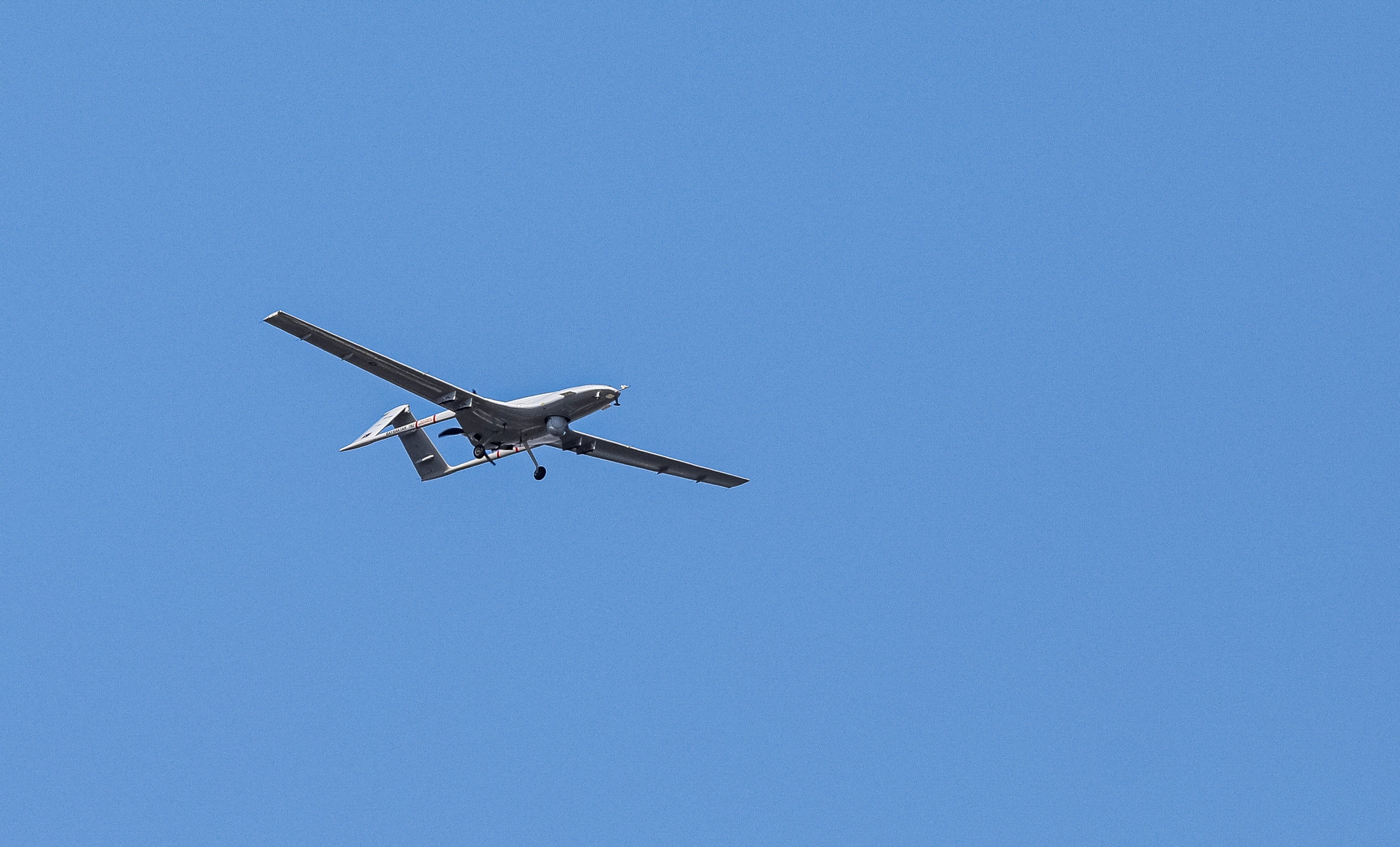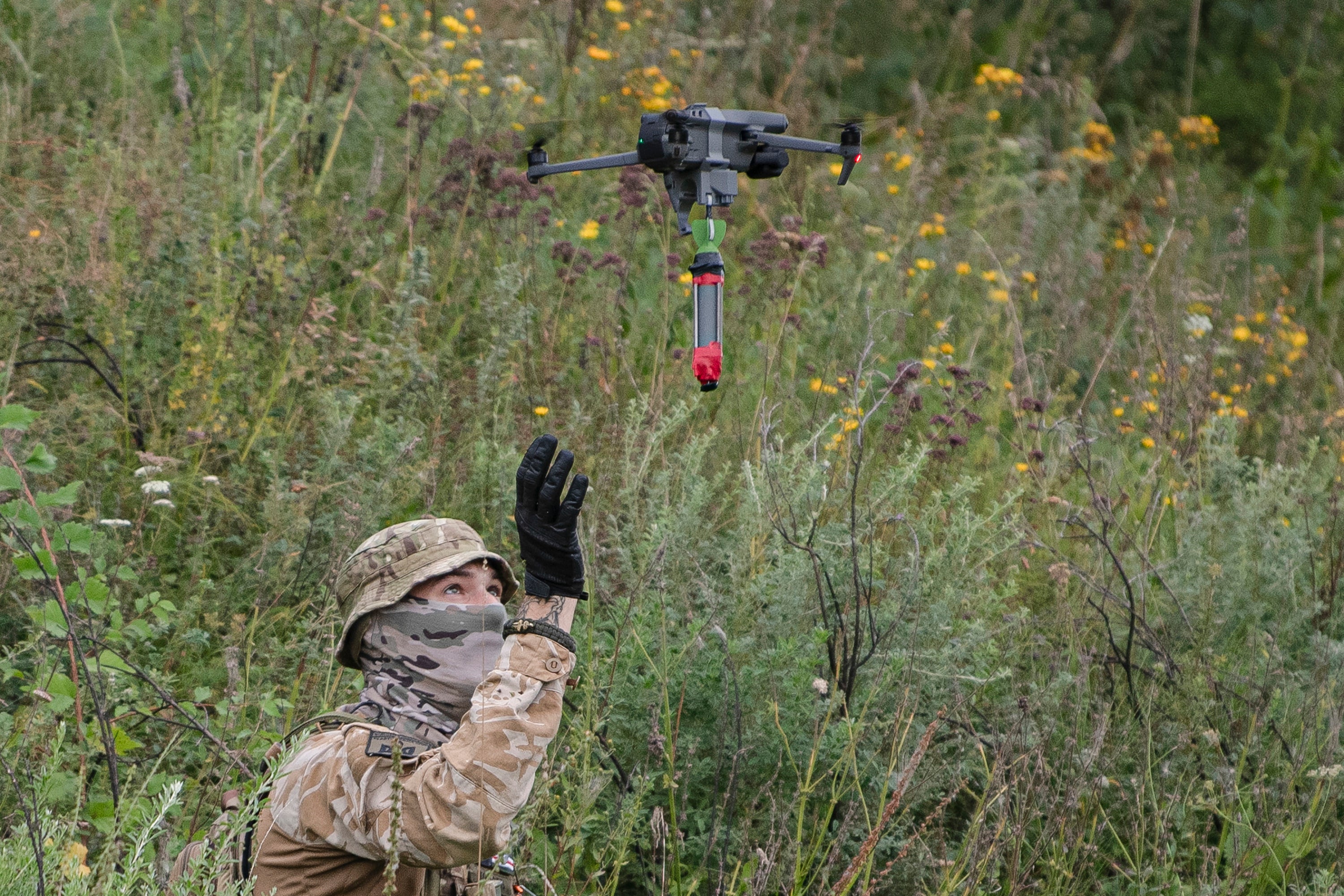Russia has wreaked havoc with kamikaze drones. Now Ukraine is fighting back
In an artillery war of attrition, drones have taken centre stage in the battle for Ukraine, reports Bel Trew from Pokrovsk, Kharkiv and Kyiv


To his Ukrainian artillery unit, Igor is their lucky charm. Without him, they likely wouldn’t be sitting in a town in war-ravaged Donbas somewhat incongruously eating pizza during a breather from the front line.
The 25-year-old drone commander is their eyes and ears in what has morphed into a bloody artillery war of attrition.
Every day, in the battlefields on the outskirts of Donetsk, east Ukraine, Igor and his drones spot Russian positions, efficiently directing fire, saving the military considerable ammunition and dozens of lives.
“Drones are as important to our army as our eyes,” he says, adding that the identity of the drone operators is kept particularly secret because of the crucial role they play on the battlefield which makes them targets.
“Even the regular commercial drones can be game-changing. They mean we can attack with precision using a fraction of the artillery ammo. It means even though we are outnumbered we don’t feel like it.”
For both sides of this war, which started when President Putin invaded Ukraine in February, one of the rising stars is the drone – be they makeshift or professional, armed or reconnaissance.
The Ukrainians say on the battlefield they are outnumbered 15-to-1 and for every artillery volley, they fire they are met with six volleys in return from their enemies. Drones have been essential to redressing that imbalance contributing to recent military gains including the recapture of what the defence ministry claims is 8,500 square kilometres (3,300 square miles) of territory since the start of September alone.

It is why across the country there are dozens of initiatives from civilians crowdfunding some of the world’s most sophisticated combat drones to 3D-printing of anti-drone laser guns.
And now more than ever keeping ahead in the drone game is essential. First, because Russia is mobilising more and more men, far outstripping the size of Ukraine’s army, and because they appear to have a fleet of new drones.
Ukrainian commanders claim over the last few months that Russia has been inflicting serious damage on their forces and civilian population due to the deployment of dozens of recently introduced Iranian kamikaze Unmanned Aerial Vehicles or UAVs. So they are trying to win the drone war.
Drones are so important the Ukrainian government has launched a fundraising campaign entitled “the army of drones” which has seen the procurement of nearly 500 UAVs according to authorities. Particular kinds of combat drones – like the Turkish Bayraktar – have even reached a kind of celebrity status after civilians bandied together to crowdsource the funding of at least three of them.
This war is about innovative and new technologies – Ukraine is a tech country, we can outdo them
“We have a radio station called Bayraktar 10, there are even songs dedicated to the UAV. People have named their pets after them and I wouldn’t be surprised if they named their children,” says Yuriy Sak, an adviser to the defence ministry about the drone craze.
“In the liberation of Snake Island, we used Bayraktar drones. Drones have been very instrumental in us destroying scores of Russian military equipment.”
He said it is not just military-grade attack drones, but the basic civilian drones anyone can purchase online that have been key.
“There are some amazing stories, like this teenager in Kyiv region not far from Bucha. He used to fly his toy drone and would pass the information that he got to the police and special forces. They were able to destroy a lot of Russian tanks using data collected by a teenager with a toy.”

Russia has not commented on the alleged procurement of new Iranian drones which are causing havoc across Ukraine. The Iranians have called the allegations “baseless”.
But the Ukrainians have shared footage of what they say is Iranian-made Qods Mohajer-6 and Shahed-136 drones that have been repainted and presented as Russian. Ukraine’s general staff said that overall their air defence shot down more than 20 Russian UAVs across the country on Thursday alone.
The warnings about Iranian drones first came in July when the White House reported that Russian officials had made several trips to central Iran with a view to purchasing several hundred drones. At the time Washington said that training in the use of these drones had already started.
A furious Kyiv downgraded diplomatic relations with Tehran, which continues to deny the allegations.
Drones are in many ways more deadly than missiles as they can fly around looking for targets and can even return to base if they do not find what they were searching for. Reconnaissance drones can pinpoint the location of artillery units efficiently directing fire.
One particularly concerning development according to Ukrainian defence officials is Russia launching multiple drones at the same time to “swarm” their air defence systems, effectively confusing them and making them inactive.
Drones are as important to our army as our eyes
There are reports that the Iranian kamikaze drones will soon be programmed to automatically operate in swarms – a terrifying prospect for the civilians underneath them.
And that is why there has been an explosion in drone initiatives.
“It’s become a commercial drone and artillery war. And so we need to have more innovative technologies because we don’t have the same number of forces and ammunition, while the Russians are using their men like meat,” says Anton Begmenko, 34, a drummer, music and cultural festival organiser turned tech-wizard in Kharkiv, northeastern Ukraine.
He has had first-hand experience with a drone: just outside of Kharkiv he says he was spotted by a Russian UAV and shortly afterwards came under artillery fire.
Since Putin launched his invasion in February, Begmenko says he has adapted 100 commercial reconnaissance drones to mean they can travel longer and at greater altitudes and are less vulnerable to jamming by the Russian military.
He also 3D-prints drone-release mechanisms so that medical supplies or grenades can be easily attached to the drone and dropped. More recently, he has started working on drone signal jammers and drone lasers that essentially fry the cameras on UAVs hovering in the sky.

“I am working on the system of a laser that can completely burn all the metrics on the cameras, on the optics. So far we can burn paper 50 metres away.
“This war is about innovative and new technologies – Ukraine is a tech country, we can outdo them.”
Anti-drone devices are also at the heart of an initiative in the capital Kyiv.
Slava Karakash, 39, is a sales manager for Ukrainian company Kvertus LLC which has developed a handheld long-range drone jammer rifle.
Weighing around 6.5 kg, the $12,000 weapon looks like a cross between a briefcase and an assault rifle. It can apparently block any commercial drone for 3km if you point it in the direction of the drone.
They have made nearly 150 in the last month and have 200 already operating on the front lines.
“It means the operator cannot move the drone or see anything when it is moving. Video transmission, radio control and GPS navigation are all blocked. The drone makes an emergency landing but the operator won’t know where it is,” he tells The Independent.
“Our main target is commercial drones, almost all of those used in the war are Parrot, Autel or DJI drones and are making reconnaissance trips.
“But it is a constant process because drones are developing too. We have to be one step ahead.”
The drone technology war is a real one. A lot of the commercial drones used for reconnaissance tend to operate on the same frequencies which are comparatively easy to hack, which is why one drone company is developing bespoke drones that the Ukrainian military has purchased.
Ivan Tolchinsky, an Israeli-Ukrainian who runs drone manufacturing company Atlas, began developing them seven years ago when the technology was still comparatively rudimentary. Now he says the technology has caught up.
There are currently several hundred Atlas drones already deployed to the frontlines with 1000 more being manufactured for Ukraine. They are all designed to bypass Russian attempts to jam or hack them.
“Previously the technology did not exist during 2014 [when the conflict with Russia first started]. Drones were a hobby – the video wasn’t good enough.”
He explains his drones, which are manufactured in Latvia, constantly scan different radio frequencies to see which ones are not blocked by Russian jammers. They can operate as a swarm of drones like a mesh, making it impossible for Russian soldiers to pinpoint where the original signal is coming from to take out the drone operator. On top of that, crucially, they can still fly without GPS.
“This is not something you can buy on Amazon, we control who purchases them. You need an end-user certificate to get our drones,” which he explains means it is harder to hack the software.

“If you look at the previous concept of the war, huge vehicles were fighting huge vehicles. But when you put many drones in the field, they can operate together as a big unit, and deliver information much faster in the field,” he adds.
And in the end, it keeps soldiers alive. Or at least that is the subject of discussion at the pizza place in Pokrovsk, Donbas.
“Russia’s army is huge. We have never seen so many soldiers,” Igor continues, echoing words from defence ministry officials.
And that is why Ukraine has to be smarter, and part of that is drones, Igor continues.
“We have more confidence, we can hit more efficiently, we can make gains that would have otherwise been impossible.
“It’s a game changer.”




Join our commenting forum
Join thought-provoking conversations, follow other Independent readers and see their replies
Comments